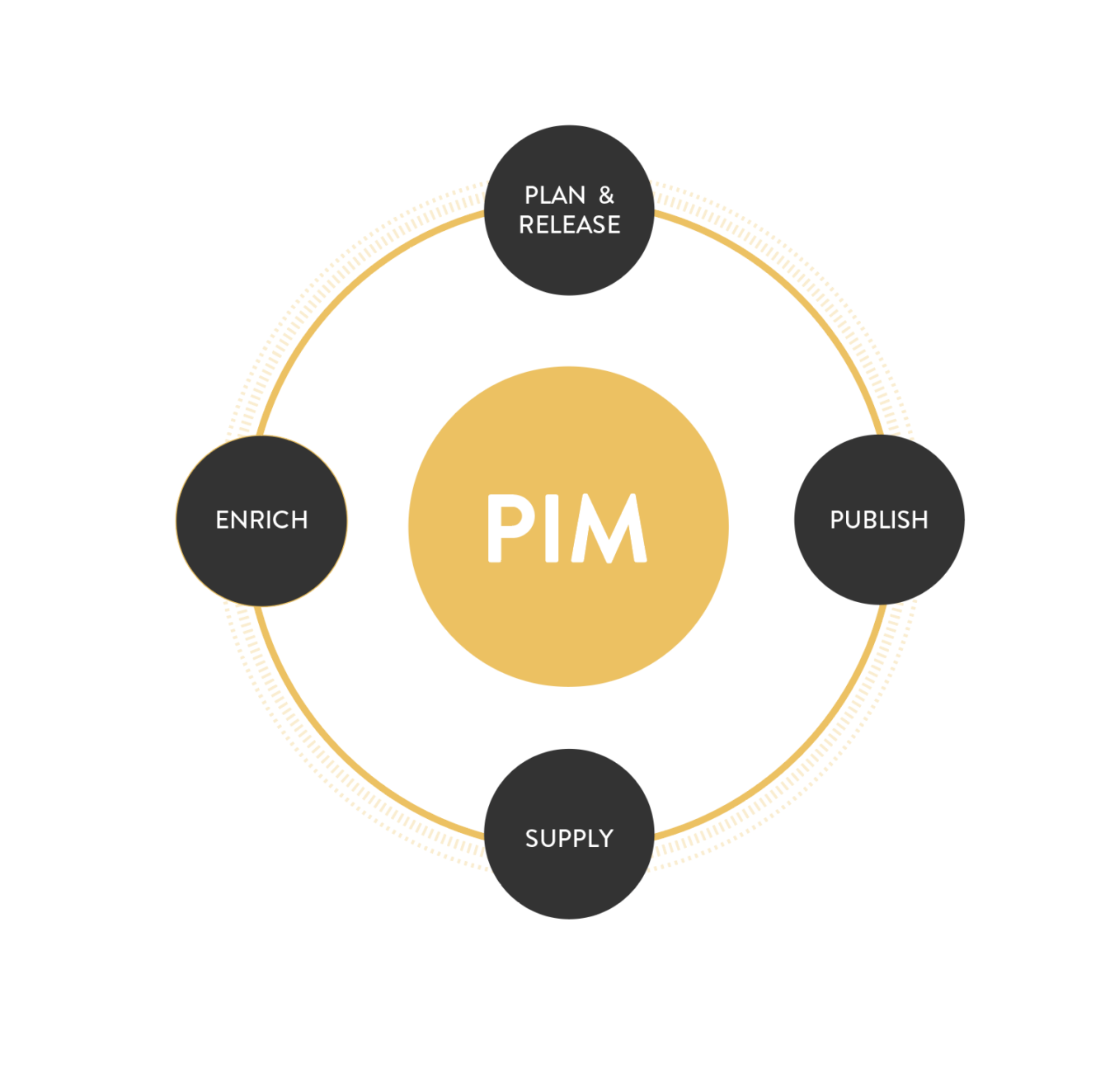Businesses are placing greater emphasis on product information. Digital channels have ushered in an era where customers can access product details that are richer, more comprehensive, and more detailed than ever before. Informed customers, equipped with the power of online research, now demand more from product descriptions, ensuring that what they see online matches what they receive.
This surge in product information, coupled with heightened customer expectations, introduces some new challenges:
- How do you manage a growing volume of product data?
- How do we harness this data for a competitive edge?
- How do we efficiently leverage it for business growth and innovative functionalities?
Enter the Product Information Management system (PIM). PIM centralizes, manages, and maintains product information, ensuring accuracy across various platforms like ecommerce sites. By adopting PIM, businesses can enhance their data collection, refinement, and distribution processes, improving efficiency, data quality, and overall customer experience.
Yet, for many in upper management, the tangible benefits of PIM might still need to be clarified. This article delves into the core advantages of PIM for businesses.
TABLE OF CONTENTS
- Business benefits of PIM
- A closer look at PIM benefits
- Optimizing productivity
- PIM’s Impact on Key Performance Indicators
- Strategic advantages of PIM
- Is PIM right for your company?
- How Vaimo can help
Business benefits of PIM
We’ll first outline the primary advantages of PIM and then delve deeper:
- Better collaboration and streamlined workflows
- Centralized product data offering a unified product view
- Boosted sales metrics
- Quicker product launches across markets
- Capability to manage diverse products, ranges, and channels
- Consistent product data improving customer experience
- Lower return rates
A closer look at PIM benefits
Optimizing productivity
Product information originates from diverse sources, including internal and external systems, suppliers, or those generated for in-house manufactured items. Once collected, this data undergoes standardization, classification, and enrichment and is then distributed across multiple sales and marketing platforms.
Traditional solutions and manually maintained databases may fail with such extensive operations. For optimal and efficient product information management, a specialized system is essential. This is where PIM comes into play.
Today’s consumers demand current product details, encompassing precise descriptions, high-quality visuals, technical specifications, and related product information like accessories. Companies with a global footprint also grapple with translating and localizing this data.
PIM systems automate these processes, refining any manual interventions required. The productivity boost PIM provides varies based on factors like existing product management practices and specific customer channel demands. However, on average, businesses can anticipate a twofold increase in productivity post-PIM integration.
PIM’s Impact on Key Performance Indicators
Incorporating PIM can significantly influence vital KPIs, including conversion rates, time-to-market, and product return rates.
The conversion rate stands as a pivotal metric for gauging business success. PIM’s meticulous handling of product data directly enhances the customer journey, leading to higher conversions. Furthermore, PIM provides exhaustive and precise product details, supplemented by contextual information, bolstering the customer’s purchasing decision or potentially upselling.
PIM’s efficiency trims the time-to-market, ensuring products gain a competitive edge swiftly. This is especially crucial when a product is in high demand, and competitors haven’t yet secured search engine visibility. Additionally, PIM’s ability to generate SEO-friendly content can increase sales through enhanced search result placements.
Returns in retail are unavoidable, but as they attack profit margins and threaten conversion rates, retailers are constantly on the hunt to decrease return rate. One major reason for product returns is flawed product information. Accurate product descriptions, attributes and assets can significantly help this issue, highlighting another benefit of PIM.

Strategic advantages of PIM
The digital business landscape is filled with challenges, from rapid digital shifts and scaling demands to adapting to an ever-evolving digital environment.
PIM offers centralized and structured product data, laying the groundwork for strategic business growth and swift service adoption.
This structured data framework allows for efficient multichannel product information management. PIM can navigate the unique product data requirements from different platforms –– from online stores and mobile apps to print media.
For businesses with a global outreach, the volume and intricacies of product data multiply. This data must be tailored to cater to each region; for example, language, measurement units, legal stipulations, and cultural distinctions. A dedicated system like PIM is crucial to navigate these complexities seamlessly and cost-effectively.
The digital commerce realm is in constant flux. While some services embrace digitalization and stay, others fade away. Companies need a unique edge: structured product data to be the first to adopt new services without threatening business stability. PIM offers this, ensuring product data is organized, categorized, and easily integrated with different systems. This agility allows your company to explore and adopt new services without huge resource commitments.
Is PIM right for your company?
Consider PIM if your company:
- Manages extensive product content and relationships
- Operates across multiple sales channels
- Handles a large number of SKUs
- Manages data from many different suppliers
- Regularly updates product offerings
How Vaimo can help
At Vaimo, we have integrated many PIM systems for businesses of different sizes and industries. For example, Moomin transitioned to a centralized PIM system, streamlining product data management and facilitating expansion into global sales channels. The PIM system integrates with various platforms, ensuring scalability and supporting omnichannel commerce across multiple markets.
Or like the University of Gothenburg, which can now efficiently distribute course information across multiple channels, including its website and national and international portals, with the help of a PIM. This system enhances students’ ability to access, compare, and select the most suitable courses for their needs.
We work with both Akeneo and Inriver as partners to provide your company with the most effective solution based on your set goals and identified challenges.
Ready to embark on your PIM journey? Begin by evaluating your needs with Vaimo’s Pimometer survey.







